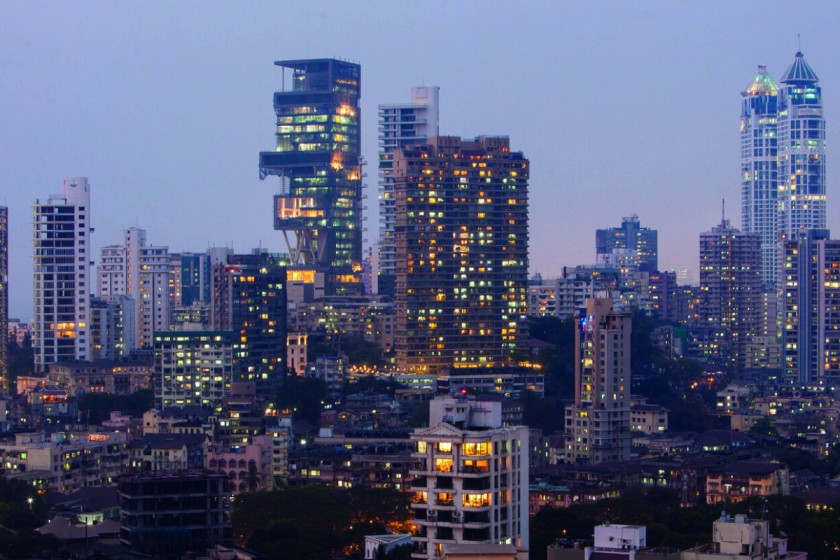- May 7, 2024
Opportunities abound for India Inc to capitalize on its Viksit Bharat journey

India is poised to become the world’s third-largest economy, driven by infrastructure growth, manufacturing initiatives, and digital advancements.
The world has seen numerous challenges over the past decade, including the pandemic, economic uncertainties, geopolitical shocks and a rapid pace of technological change. India has navigated these challenges remarkably well. Today, it is poised to become the world’s third-largest economy over the next five years and will add on more GDP every year than the EU. There is a palpable sense that this is our time, both in India and in the eyes of the world.
The government’s policy innovations and timely decision-making have kept the economy on track and created new opportunities. More importantly, a focus on inclusive growth and a digital mindset are crucial elements of the foundation that has been built. Adept management of the country’s economy has been commendable. India has witnessed steady growth, employed fiscal discipline, nurtured a resilient banking sector and offered support to disadvantaged sections of society.
Even as the economy received sustained support, foundational efforts were made for realizing the long-term vision of a developed India. Reforms were embraced, ambitious targets were set across sectors and a steadfast focus on execution was kept at all levels. Let us examine a few major outcomes.
First, infrastructure development has visibly caught pace. National highway construction increased from about 12.1km per day in 2014-15 to 28.3km per day in 2022-23, as recorded, and rural road connectivity coverage is at 99%. Metro rail projects have reached 20 cities, 94% of India’s total broad-gauge railway network has been electrified and 74 airports have been operationalized since 2014. The Gati Shakti National Master Plan, connecting 35 central government departments for multi-modal connectivity, is a notable example of infrastructure development.
Second is the set of initiatives taken to boost manufacturing. The biggest is India’s production-linked incentive (PLI) scheme, which covers 14 sectors, aimed at improving our manufacturing capabilities. Latest figures indicate that it had attracted investments of over ₹1.03 trillion till November 2023, resulting in production/sales of ₹8.61 trillion and employment generation of over 678,000.
Third, several measures have been taken to improve the ease of doing business. These include liberalized foreign investment rules and the launch of a unified tax system, GST. Over 3,600 rules of compliance have been freed of criminal-failure risk and 41,000 have been reduced by various ministries/departments and states/ Union territories. The Jan Vishwas (Amendment of Provisions) Bill, 2023, has been passed by Parliament. Further, a national single window system has been introduced to simplify government-to-business (G2B) clearance processes across ministries. For easier business exits, we now have the Insolvency and Bankruptcy Code.
Fourth is India’s digital revolution. The country has witnessed an exponential increase in digital penetration on the back of the ‘JAM trinity’ of Jan Dhan, Aadhaar and Mobile, national digital literacy mission, Open Network for Digital Commerce (ONDC), Government e Marketplace (GeM), etc. Over 500 million people have benefited from the Jan Dhan Yojana, with over ₹2 trillion deposited in these accounts.
Fifth is the government’s focus on ease of living by improving the delivery of services to people. From universal sanitation coverage to social welfare schemes in the areas of healthcare (340 million-plus citizens get free health insurance under Ayushman Bharat), pension and banking, from smoke-free kitchens (100 million-plus women given free gas connections) to piped water being made far more widely available (140 million-plus families now have access to clean tap water), and from technology access to housing efforts (40 million-plus families have pucca houses now), welfare schemes are touching millions of lives.
India envisions itself as a $30 trillion-plus economy by 2047, a GDP target for Viksit Bharat. The manufacturing sector should be 25% of GDP. For this, we must aim to make manufacturing grow 16 times and exports 11 times. To enhance this sector’s competitiveness, the country needs to prioritize research and development, quality production at scale, digitalization, skill development and a holistic approach to the entire value chain. This is even more important in hi-tech sectors such as defence, electronics and semiconductors. This will go a long way to making India a leading ‘product nation’.
Next, India ranks seventh globally among countries most affected by climate change. However, climate change offers an opportunity as well. Given the need for funding and technology to address it, we must focus on creating a business model out of climate change. Renewables, electric vehicles and green cities are excellent examples. The private sector and government must collaborate to harness this potential.
Further, enhancing the judicial capacity in the country is important. India has only 20 judges per 1 million people, which means that even routine legal processes like enforcing a contract might take up to four years. By increasing judicial capacity and deploying technology, courts may be able to reduce resolution time.
Finally, the benefits of our economic prosperity should be distributed to all. This vision extends to ensuring the well-being of our farmers, who are integral to our nation’s success. We need greater participation of women in economic activities across sectors. We should target female labour force participation of 45-50% by 2047.
Given much-improved telecom connectivity in smaller cities and towns, women from even the remotest parts of India can serve any part of the world, provided we offer them the right training and skills. This presents an opportunity for India to become the world’s front-office. By empowering farmers, increasing agricultural productivity and promoting women’s workforce participation, we can build a more inclusive and prosperous India.
Authored by Anish Shah, president, FICCI, and group CEO & managing director, Mahindra Group.
